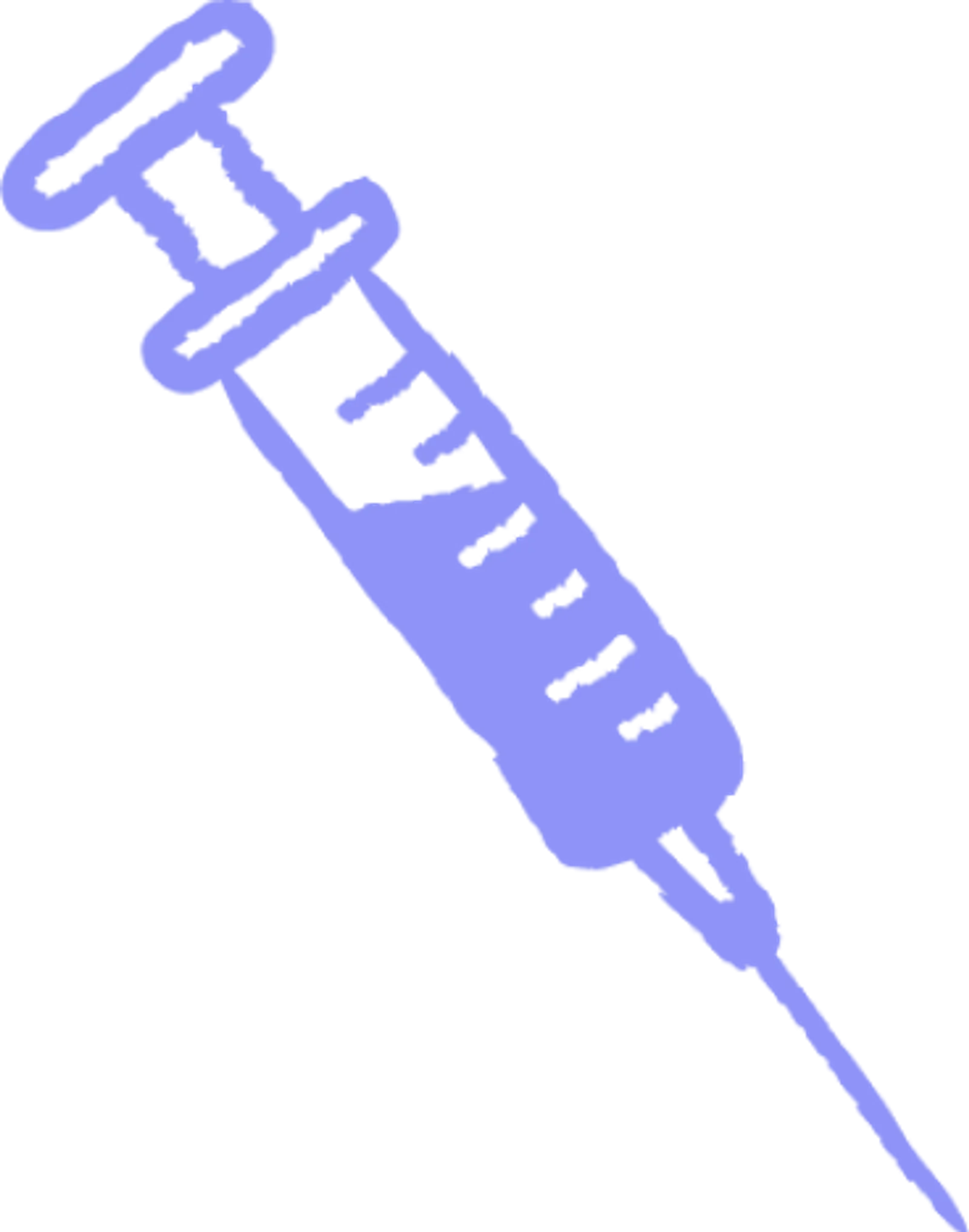Plasma 101
Who: Eligible donors between 18 and 63 can earn up to $560 a month in NY and up to $770 a month in FL.
What: Plasma is the yellow part of your blood that replenishes naturally.
Where: Queens, Brooklyn, The Bronx (NY), and Ft. Pierce (FL).
Why: Get paid to donate and help treat bleeding disorders, immune deficiencies, and more.
When: No appointment needed—walk in anytime before closing.
The Role of Plasma in Kidney Function and Disease

The Role of Plasma in Kidney Function and Disease
Kidney health depends intricately on plasma composition. Imbalances can rapidly deteriorate function, yet plasma also holds therapeutic promise. This article clearly explains the science behind plasma's role in maintaining and impairing kidney function. You’ll gain invaluable insights into how plasma analysis can unlock early diagnosis and targeted treatment opportunities for better kidney disease control.
Plasma carries filtered toxins, excess fluid, nutrients and proteins from the blood to be excreted or reabsorbed by the kidneys to maintain precise balance. Dysfunctional kidneys accumulate waste products and deplete proteins in plasma, revealing disease early. Plasma analysis aids diagnosis, guides dialysis adequacy, predicts mortality risk, and plasma exchange removes culprit antibodies directly to stabilize function.
Understanding Plasma's Impact on Kidney Function:
Aspect | Description |
Plasma Composition | A complex mixture of proteins, electrolytes, nutrients, and waste products. |
Kidney's Role | Maintains the balance of plasma components by filtering blood, reabsorbing beneficial components, and removing toxins. |
Key Plasma Proteins | Albumin (maintains fluid levels) and Globulins (transport lipids, hormones, vitamins). Imbalances can lead to high blood pressure or edema. |
Electrolyte Balance | Kidneys filter and regulate electrolytes like sodium, potassium, chloride, calcium, and phosphate, crucial for various bodily functions. |
Filtration Process | Plasma undergoes filtration in nephrons; kidneys reabsorb nutrients and excrete waste, adjusting filtration based on body's needs. The reabsorption is a critical part of nutrient transport, as it allows the body to reclaim and retain important substances that are needed for various physiological functions. |
Plasma Imbalances | Can lead to kidney diseases; e.g., Hyperkalemia from excessive potassium, hypoalbuminemia from low albumin levels. |
Monitoring Plasma | Essential for early diagnosis and management of kidney diseases; tests analyze creatinine, electrolytes, proteins, and phosphorus levels. |
Plasmapheresis filters toxins from plasma, beneficial in certain kidney disorders. Plasma exchange in autoimmune kidney disorders removes harmful antibodies. | |
ZAG in Kidney Disease | Zinc-Alpha2-Glycoprotein (ZAG) rises in early stages of CKD, serving as an early biomarker and potential therapeutic target. |

Plasma and Kidney Function
Understanding Plasma Composition and Kidney Health
Plasma, the clear yellowish fluid part of blood, is a complex mixture of proteins, electrolytes, nutrients, and waste products. The kidneys play a vital role in maintaining the optimal balance of these plasma components. Healthy kidneys filter the blood and reabsorb beneficial components back into the bloodstream while removing toxins and excess fluid.
The two main plasma proteins filtered by the kidneys are albumin and globulin. Albumin helps maintain overall fluid levels in the blood vessels while globulins transport lipids, hormones, and vitamins. A delicate balance of these proteins is needed - too much albumin causes high blood pressure while too little leads to edema. The kidneys remove excess proteins and conserve lower levels to preserve this balance.
In addition to proteins, the kidneys also filter electrolytes like sodium, potassium, chloride, calcium and phosphate. These electrolytes have various important functions - from muscle and nerve conduction to bone health. The kidneys reabsorb and excrete electrolytes as needed to maintain precise plasma concentrations of each one. Even small deviations can have significant health consequences.
By preserving the optimal balance of proteins, electrolytes and other useful compounds, the kidneys ensure that the composition of plasma supports overall health and functioning. Diseased kidneys have difficulty maintaining this balance, allowing waste products and excess fluid to accumulate while depleting essential nutrients. Checking plasma components can often reveal early signs of kidney dysfunction before major symptoms appear.
The Filtration Role of Plasma in Kidneys
The kidneys receive about 20-25% of the blood pumped by the heart every minute for filtering - that's over 400 gallons daily! This river of blood plasma carrying waste products, nutrients and proteins undergoes an intricate multi-step filtration process within the microscopic functional units of the kidneys called nephrons.
First, the plasma flows through a bundle of tiny blood vessels called the glomerulus. Due to pressure, small molecules like waste products, electrolytes and water get pushed out into the kidney tubules while larger proteins like albumin stay behind in the blood vessels. This initial filtrate contains both useful substances and toxins.
As the filtrate flows down the tubules, the kidneys reabsorb almost all essential nutrients, water and electrolytes back into the bloodstream while secreting additional waste substances. Useful substances like glucose, amino acids, potassium, calcium and phosphate get reclaimed, while metabolic byproducts like urea and uric acid get secreted into the tubules as urine. This reabsorption and secretion process allows the kidneys to fine-tune the composition of plasma.
The amazing kidney tubules can even adjust their filtering and absorption rates depending on the body’s current needs! For example, during dehydration, the kidneys conserve more water by reducing filtration and increasing reabsorption. This ability to modulate plasma composition maintains homeostasis during changing conditions.
The highly dynamic filtration mechanisms of kidneys allow them to filter huge volumes of blood plasma and selectively remove wastes while preserving beneficial components like proteins and nutrients. This keeps plasma composition optimal for health even with varying intake and changing metabolic demands. Checking the levels of plasma contents reveals how well the kidneys are doing their complex balancing job. This intricate interplay between kidney function and metabolic demands underscores the fascinating link between plasma and metabolic disorders. Checking the levels of plasma contents reveals how well the kidneys are doing their complex balancing job in the context of metabolic health.
How Plasma Affects Kidney Health
Plasma Imbalances and Kidney Diseases
The intricate composition of plasma needs to be maintained within tight limits for the kidneys to function optimally. However, when imbalances occur in plasma components, it can lead to impaired kidney health and even kidney failure over time.
One critical plasma electrolyte, potassium, requires careful regulation by healthy kidneys. But when kidney function declines, excess potassium can build up in the blood leading to a condition called hyperkalemia. Early symptoms are non-specific like fatigue and weakness. But as levels rise, it can cause severe heart rhythm issues and even sudden cardiac arrest.
Medications like diuretics, ACE inhibitors or ARBs used for high blood pressure can also cause hyperkalemia in susceptible individuals. Hence, those with kidney disease need to monitor plasma potassium levels closely.
Besides electrolytes, plasma proteins like albumin also require good kidney function for their regulation. Low albumin levels in plasma is called hypoalbuminemia and is common in later stages of chronic kidney disease. Albumin helps maintain optimal blood volume and pressure.
As kidney dysfunction reduces albumin reabsorption and synthesis, plasma levels drop leading to fluid leaking out from blood vessels into surrounding tissues. This causes swelling, especially leg edema. Low albumin also independently predicts higher cardiovascular risk in kidney disease. Hence, monitoring plasma albumin concentration serves as an important marker for managing chronic kidney failure progression.
These are just two examples of how imbalances in plasma components can both result from and exacerbate kidney dysfunction. Catching such plasma abnormalities early allows interventions like diet changes, medications or dialysis to prevent further kidney damage. This highlights the importance of regular plasma testing for those at risk of kidney disease.
Monitoring Plasma for Kidney Health
Since plasma carries many essential compounds filtered by the kidneys, tracking plasma composition serves as an invaluable diagnostic and management tool in kidney care. Simple blood tests can analyze levels of key substances like creatinine, electrolytes, proteins and phosphorus. This allows assessment of how well the kidneys are doing their job of filtering out waste products while maintaining optimal balance of nutrients.
For example, as kidney function declines, creatinine levels in the blood rise as the filtration and excretion rates drop. Hence, plasma creatinine concentration and estimated glomerular filtration rate (eGFR) are standard markers for evaluating kidney health. Phosphate levels also increase with failing kidneys as excess gets retained in the blood. Even a simple electrolyte panel measuring sodium, potassium, chloride and CO2 can uncover imbalances pointing to impaired kidney function.
In addition to such waste products, monitoring plasma proteins like albumin also provides insight into kidney health. More advanced assessments can also check for proteinuria - excess protein in the urine - an early red flag for kidney damage. Catching plasma abnormalities early on, even before symptoms appear, allows early interventions to support declining kidney function and avoid further deterioration.
For those already diagnosed with chronic kidney disease, regular plasma assays are crucial for guiding adequate dialysis therapy and tracking disease progression over time. Any worsening of plasma markers would warrant adjustments in treatment intensity, medications or diet. Periodic plasma monitoring also helps uncover complications like hyperkalemia or fluid overload before they become dangerously high. This facilitates keeping complex chronic kidney disease under better control.
The complex filtration and reabsorption functions of the kidneys have an immense impact on plasma composition. Tracking plasma components thus provides a window into evaluating kidney health - from detecting early dysfunction to managing later-stage kidney failure. Even simple blood tests can uncover imbalances pointing to impaired function warranting further assessment and care. Hence plasma analysis serves as an indispensable tool in maintaining kidney health.
Plasma Analysis and Treatment in Kidney Disease Management:
Aspect | Description |
Diagnostic Value | Plasma analysis reveals early signs of kidney dysfunction; key markers include creatinine, electrolytes, proteins, and phosphorus levels. |
Plasma and Kidney Diseases | Imbalances in plasma components like potassium and albumin can lead to kidney diseases and exacerbate existing conditions. |
Plasma Testing | Regular plasma testing is crucial for those at risk of kidney disease, aiding in early intervention and disease management. |
Plasmapheresis | A treatment method that involves filtering plasma to remove disease-causing substances, used in conditions like ANCA vasculitis and anti-GBM disease. |
Plasma Exchange | Involves replacing patient’s plasma with donated plasma to remove harmful antibodies, used in autoimmune kidney disorders like lupus nephritis and ANCA vasculitis. |
Role of ZAG | ZAG levels correlate with CKD progression, serving as an early biomarker and a target for therapeutic intervention. |
Therapeutic Potential | Targeting ZAG could slow CKD progression; research is ongoing for developing treatments to modulate ZAG levels and activity. |

The Use of Plasma in Treating Kidney Disease
Plasmapheresis in Kidney Disease Management
While optimal plasma composition supports healthy kidney function, imbalance can contribute to renal disease. Fortunately, directly filtering excess toxins from plasma itself provides an effective treatment approach for certain kidney disorders.
This blood purification technique called plasmapheresis involves mechanically separating plasma from the blood and eliminating disease-causing substances from it. The filtered plasma is then returned to the body along with the blood cells. Plasmapheresis manages conditions where harmful components build up abnormally in the plasma like antibodies, lipids or plasma proteins that attack the kidneys.
For example, plasma donation leads to plasma exchange which helps clear antibodies aggravating kidney inflammation in anti-neutrophil cytoplasmic antibody (ANCA) vasculitis. By removing these autoantibodies over several sessions, kidney function stabilizes. Plasmapheresis also benefits patients with anti-glomerular basement membrane (GBM) disease where antibodies severely damage filters in the kidneys. Eliminating these antibodies halts further renal damage.
Besides plasma treating autoimmune diseases, plasmapheresis also treats plasma cell disorders like multiple myeloma where excessive abnormal proteins accumulate and impair kidney function. Filtering out the overload protein helps restore kidney function. While not a cure, it serves as a temporizing bridge therapy while specific medications start acting.
By extracting disease-causing components from plasma itself, plasmapheresis provides prompt relief in inflammatory and protein overload kidney conditions. While medications address the root disorder, directly purifying plasma has an immediacy of action that stabilizes function in affected kidneys.
Plasma Exchange in Autoimmune Kidney Disorders
When autoantibodies go rogue and attack the kidneys, removing these culprit antibodies provides rapid relief. One approach is plasma exchange which involves completely replacing the patient’s plasma with donated plasma lacking the harmful antibodies. This immediately neutralizes their damaging effects and offers prompt respite.
For example, lupus nephritis results from autoantibodies aggregating as immune complexes in the kidneys leading to severe inflammation and dysfunction. But completely swapping the patient’s plasma dilutes these autoantibodies and immune deposits. This rapidly improves kidney function and allows other immunosuppressants like steroids and cellcept to maintain control subsequently.
Similarly, plasma exchange offers acute benefit in ANCA associated vasculitis which causes pus forming kidney inflammation due to autoantibody mediated injury. Prompt plasma exchange decreases antibody load, reducing immune complex deposition and averting further destruction of delicate kidney filters.
Plasma exchange has even resurrected kidney function rapidly in anti-GBM disease where antibodies can ravage kidneys to total failure within weeks. By eliminating these circulating antibodies, further damage is halted allowing kidneys to recover some function with adequate support therapy.
While dialysis can artificially replace kidney function when they fail, treating the underlying antibody attack is key. Plasma exchange offers the most prompt rescue by directly removing destructive antibodies in such aggressive autoimmune kidney disorders and is effective in helping to combat autoimmune disorders.
Zinc Alpha2 Glycoprotein (ZAG) and Kidney Disease
Role of ZAG in Chronic Kidney Disease
While we mostly associate kidney function with filtering blood, newer research highlights the key role of other plasma proteins like Zinc-Alpha2-Glycoprotein (ZAG) in chronic kidney disease. This compound is involved in lipid metabolism and immune regulation.
Recent studies demonstrate that declining GFR in early stages of CKD correlates strongly with increasing ZAG levels. As kidney dysfunction progresses to later stages, ZAG concentration continues to rise progressively in plasma. This pattern distinguishes ZAG from other conventional biomarkers like creatinine which only start increasing after significant kidney damage.
Hence, plasma ZAG shows promise as an early biomarker for identifying declining renal function before substantial loss of nephron units. It detects mild kidney impairment even when conventional markers like albuminuria and GFR may still seem normal. Additionally, monitoring plasma ZAG levels gives insight into CKD progression rate and mortality risk.
Since ZAG starts rising relatively early in CKD, it provides a wider window for interventions. Identifying progressive ZAG elevation offers lead time for measures like controlling blood pressure, diabetes and initiating renoprotective drug therapy to decelerate disease course. Hence, incorporating plasma ZAG tracking improves monitoring and prognostication in CKD care.
Therapeutic Potential of Targeting ZAG
Besides an early warning biomarker role, emerging research implicates ZAG directly in the pathogenesis of CKD-associated inflammation and fibrosis. As plasma ZAG levels increase with reducing nephron numbers, they exacerbate tubulointerstitial damage and fibrosis. Elevated ZAG triggers inflammatory pathways and accumulates in diseased kidneys stimulating scarring.
Targeting ZAG offers enticing possibilities for directly slowing CKD progression. Animal studies blocking ZAG activity demonstrated markedly reduced tubular atrophy and fibrosis. Early human trials show medications decreasing plasma ZAG levels also convey renoprotection in diabetic nephropathy by mitigating microinflammation and associated renal fibrosis. This underscores the significance of comprehending the impact of medications on plasma and its components, shedding light on potential therapeutic avenues for managing complications associated with diabetic nephropathy.
Developing pharmacotherapies to selectively lower elevated ZAG in kidney disease could provide an entirely novel treatment avenue for preserving nephrons and slowing progression. Research also continues into leveraging ZAG’s abilities to beneficially modulate lipid metabolism for therapeutic applications.
As a key participant in CKD pathophysiology, ZAG promises applications spanning early diagnosis to prognostics and even targeted therapy. Quantifying changes in its plasma levels provides a sensitive marker for subclinical renal dysfunction while also predicting future trajectory. Moreover, advancements in plasma proteomics showcase the potential for a revolutionary shift in disease diagnosis and treatment. Therapeutics tuning its activity and concentration could directly alter disease course through ZAG's influence on pathways driving kidney inflammation and fibrosis.
At Olgam Life, our mission prioritizes our donors, recognizing them as vital contributors to our life-saving initiatives. We distinguish ourselves by prioritizing the well-being and comfort of our donors, considering them crucial to our operations. We ensure a positive and comfortable donation experience, conducting thorough health checks before utilizing state-of-the-art machines for plasma collection. Our staff is highly satisfied and supported in their careers, contributing to the creation of strong communities around our donation centers. For more information, explore our FAQs on plasma donation or reach out to our team for personalized assistance in making the decision to donate or find a nearby plasma center.
















